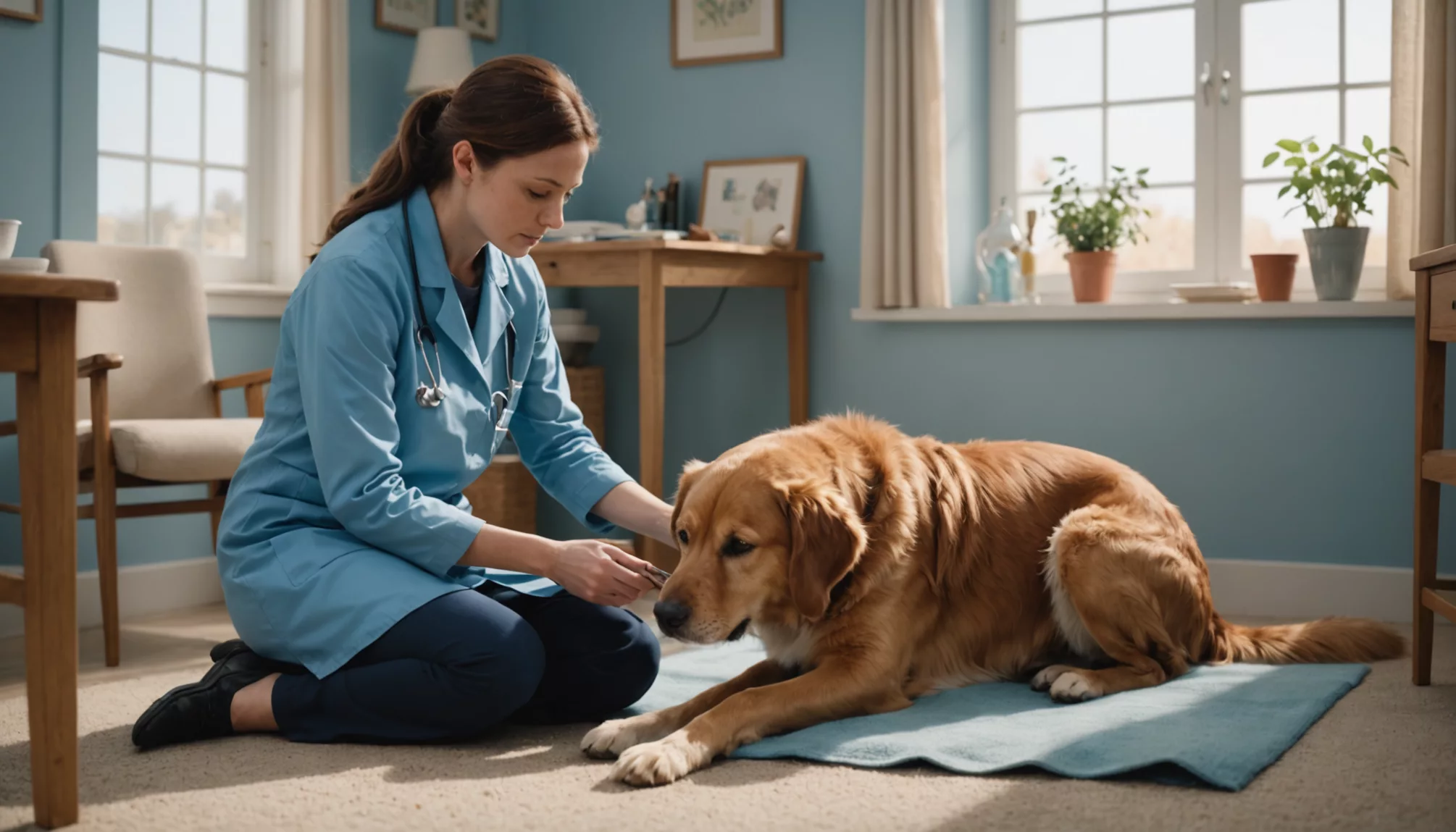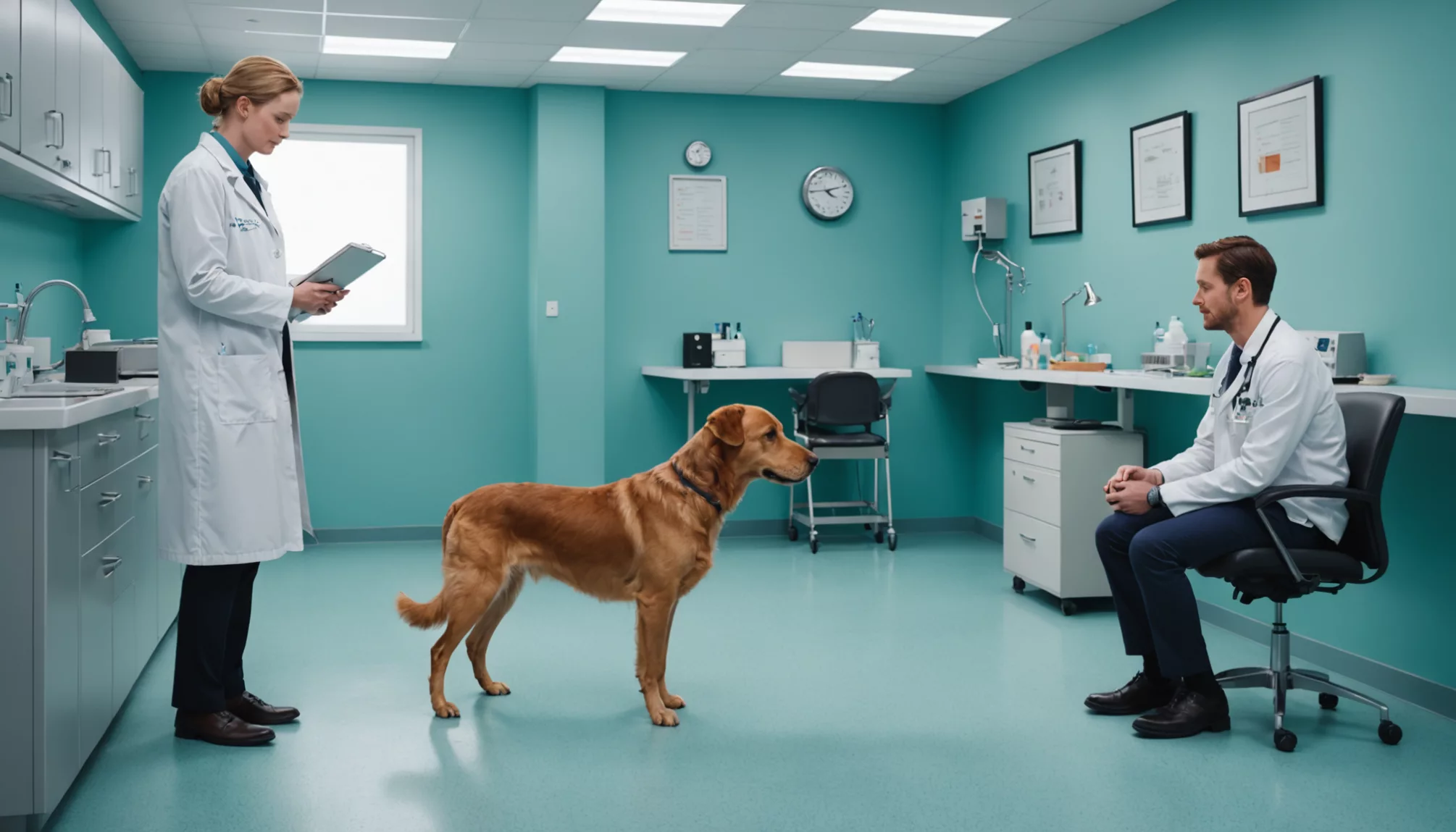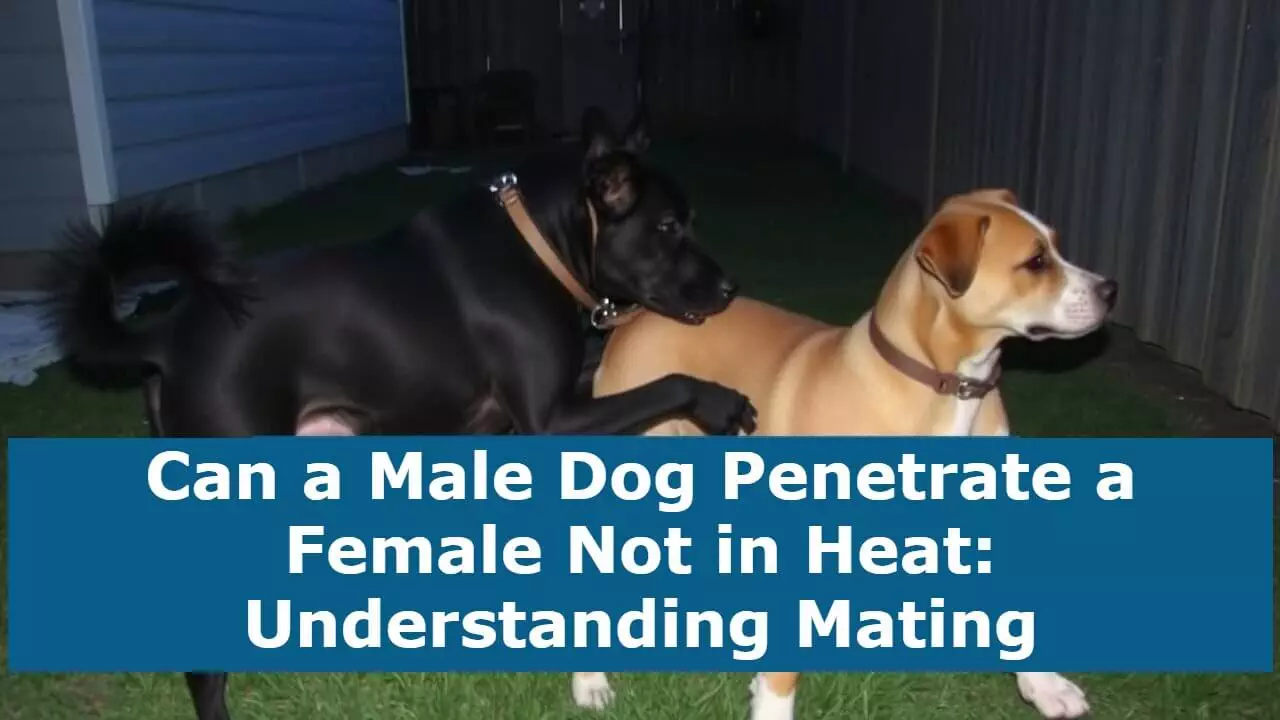Understanding dog behavior and responsible breeding is essential for every pet owner. For dog reproduction, timing and proper veterinary guidance are crucial for the health and safety of both male and female dogs. Let’s explore the importance of professional breeding practices and why working with qualified veterinarians ensures the best outcomes for our furry friends.
Responsible pet ownership includes understanding natural mating behaviors, recognizing the signs of a female dog’s heat cycle, and knowing when breeding is safe and appropriate. We’ll discuss how to prevent unwanted pregnancies, the benefits of spaying and neutering, and the key factors that influence successful breeding under veterinary supervision. This knowledge helps keep our pets healthy and prevents complications that could arise from improper breeding practices.

Understanding the Female Dog Heat Cycle
What Does It Mean When a Female Dog is in Heat?
When your female dog is in heat, her body prepares for pregnancy. You may see vulgar swelling, bloody vaginal discharge, and restlessness. She might also show more interest in male dogs, or seem nervous around them. These changes happen because hormones shift to support conception.
VCA Hospitals, ASPCA
The Four Stages of the Heat Cycle
The female dog’s estrous cycle has four main stages. Each stage affects behavior and fertility:
| Stage | Duration | Key Characteristics |
|---|---|---|
| Proestrus | 9-10 days | Bloody discharge starts, vulva swells, female attracts males but won’t mate |
| Estrus | 5-10 days | Discharge lightens, ovulation occurs, female accepts mating |
| Diestrus | 60-90 days | Hormones shift, female may be pregnant, less tolerant of males |
| Anestrus | 4-5 months | Reproductive rest, body resets for next cycle |
American Kennel Club, VCA Hospitals
Why a Dog Is Most Fertile During Specific Stages?
Fertility peaks in estrus because ovulation happens then. Your dog’s body creates the best conditions for sperm to survive, and she actively accepts mating. Many owners wonder, “Can a male dog penetrate a female not in heat?” Typically, a female is not receptive if she isn’t in estrus. However, an intact male dog may still attempt to mount if he senses her scent. If you suspect unwanted mating, contact a veterinarian right away.
ASPCA, VCA Hospitals

Can a Male Dog Penetrate a Female Not in Heat?
The Male Dog’s Instincts and Drive to Mate
You may notice that male dogs show heightened interest in females when they detect pheromones. During the estrous cycle, females release a distinct scent that triggers a male’s mating drive. When a female dog is not in heat, her hormone profile changes, and you are less likely to see strong mating behavior.
Physical Limitations: Can a Male Dog Breed with a Female Not Ready to Mate?
Mating outside of heat is uncommon. Your female dog’s body is not prepared to support fertilization when hormone levels are low. Many dogs show little willingness to mate unless the female is in heat.
| Physical Factor | During Heat | Outside Heat |
|---|---|---|
| Vulva State | Enlarged, soft | Normal size, firm |
| Hormone Levels | Elevated | Low |
| Receptiveness | High | Very low |
| Physical Readiness | Present | Absent |
According to the American Kennel Club, these physical changes help ensure successful mating when timing is correct.
Understanding a Female Dog’s Receptiveness
When your female is not in heat, she typically resists a male dog’s advances. She may move away or even show aggression. If you notice signs of mounting or stress (biology), consult a veterinarian to rule out any underlying discomfort.
Medical Perspectives on Out-of-Heat Mating
Attempting to breed dogs outside of heat can lead to frustration, injury, or infection. You risk unnecessary stress on both animals, especially if there is repeated humping without proper readiness. Professionals, including those at the Merck Veterinary Manual, recommend focusing on scheduled breeding or neutering to prevent complications.

Factors Influencing Dog Mating Success
You need several biological and environmental conditions to align before dogs can mate safely. If you wonder, can a male dog penetrate a female not in heat? It rarely results in successful mating because a female must be in estrus for fertilization. Mating outside this window may cause stress and potential injury. (VCA Hospitals, American Kennel Club)
The Importance of Timing the Dog Mating
You should pay close attention to the female’s estrous cycle, which typically happens twice a year. She is usually the most fertile 9–13 days after the onset of vaginal bleeding. During this period, the vulva swells, and the discharge changes from red to straw-colored. These signs show she is ready to mate. (VCA Hospitals, American Kennel Club)
| Heat Cycle Stage | Duration | Signs | Fertility Status |
|---|---|---|---|
| Proestrus | 7–10 days | Bloody discharge, swollen vulva | Not fertile yet |
| Estrus | 5–14 days | Straw-colored discharge, receptive to male | Peak fertility |
| Diestrus | 60–90 days | Discharge stops, calmer behavior | Not fertile |
| Anestrus | 4–5 months | Rest period between cycles | Not fertile |
How Breed Differences Affect Mating
Different breeds mature at varying ages. Small breeds often reach sexual maturity by six to eight months, while larger breeds may take up to 24 months. A large male dog can accidentally harm a smaller female dog if she is not fully receptive. You may need veterinary help when two dogs differ in size. (American Kennel Club, VCA Hospitals)
Recognizing Signs a Female in Heat is Ready to Mate
Look for a softened vulva, reduced bleeding, and tail flagging (tail held to the side). She may also seek contact with male dogs, remain still for mounting, and urinate more often. These behaviors show her high willingness to mate. (Texas A&M Veterinary Medicine, Merck Veterinary Manual)
Expert Guidelines for Successful Breeding
You want to ensure both dogs have complete health screenings, up-to-date vaccinations, and no signs of infection. Experts recommend waiting until a female dog is at least two years old and has experienced a couple of heat cycles. Provide a quiet space with firm footing and minimal distractions for a safe mating experience. Professional supervision helps if either dog is inexperienced or has a history of unsuccessful mating. (VCA Hospitals, American Kennel Club)

Risks and Consequences of Allowing a Male Dog to Mate with a Female Not in Heat
Potential Injuries to the Female Dog
If you let an intact male dog try to mate with a female who is not in heat, the female’s reproductive tract remains unprepared. She lacks the lubrication and elasticity that develops during her estrous cycle. This can cause painful tearing, inflammation, and serious infections. One large veterinary survey reported that 82% of these cases required medical care (American Veterinary Medical Association; Veterinary Study).
Common tissue injuries include: • Surface cuts and bruising of the vulva
• Internal trauma from forced penetration
• Bacterial infections that may demand antibiotics
Psychological Stress on Both Male and Female Dogs
These mating attempts can cause behavior changes in both dogs. Female dogs often exhibit anxiety, defensive aggression, and altered sleeping or eating habits. Male dogs may show obsessive mounting, heightened territorial marking, and aggression toward other males. Once these patterns take hold, training sessions become more difficult, and both animals may lose focus.
| Behavioral Changes | Female Dogs | Male Dogs |
|---|---|---|
| Immediate Effects | Fear, defensive actions | Frustration, agitation |
| Long-term Impact | Social withdrawal | Obsessive behaviors |
| Training Difficulties | Distrust of male dogs | Poor concentration |
Unwanted Pregnancies and Puppy Complications
Pregnancy may still occur if the female transitions into heat sooner than expected. This can lead to birth defects, smaller litter sizes, or higher miscarriage rates. Delivery complications also increase when a female dog’s body is not fully prepared for mating and pregnancy (American Veterinary Medical Association).
Veterinary Research and Case Studies
Studies show that dogs mated outside normal heat cycles face triple the risk of reproductive tract infections. Proper mating timing helps reduce tissue damage, stress, and poor breeding outcomes (Veterinary Journal). Experts urge dog owners to consult a veterinarian, use careful supervision, and consider neutering to avoid these serious risks.

Responsible Pet Ownership: Neutering and Preventing Unplanned Breeding
Benefits of Neutering Male Dogs and Spaying Female Dogs
Spaying and neutering lower the risk of reproductive cancers and helps control roaming and aggression. These procedures also reduce unplanned breeding, which minimizes unwanted pregnancies and puppy care challenges. According to the American Animal Hospital Association, small breed dogs may be neutered around 6–9 months, while larger dogs often benefit from waiting until growth plates close.
Key benefits for both male and female dogs: • Less marking or territorial behavior • Decreased risk of reproductive infections • Fewer stress-related behaviors linked to mating • Potential for longer lifespans In addition to these benefits, spaying and neutering can also lead to improved overall behavior in dogs, making them more suitable companions. Many pet owners observe that altered dogs often exhibit enhanced female dog affectionate traits, fostering deeper bonds with their families. Furthermore, these procedures contribute to the reduction of the number of unwanted puppies, helping to alleviate the burden on animal shelters and rescue organizations.
The American Veterinary Medical Association suggests discussing timing and health factors with a trusted veterinarian.
Strategies to Prevent Unwanted Dog Mating
Physical barriers and close supervision discourage attempts to mate. Secure fences and separate living areas work well during a female dog’s estrous cycle or heat period. Keep intact dogs on a leash during walks to prevent unexpected contact. Steady training builds strong recall skills and helps manage excitable behavior around other dogs.
What to Do If You Suspect Your Female Dog May Get Pregnant
Quick action is vital if an intact male dog attempts mating, even if the female is not in heat. Follow these steps:
| Timeline | Action |
|---|---|
| Immediately | Contact a veterinarian |
| Within 24 hours | Discuss emergency contraception |
| First Week | Watch for behavior changes |
| Weeks 2–3 | Schedule a wellness exam |
Professional guidance helps confirm pregnancy status and plan care.
Professional Breeding vs. Accidental Mating
Professional breeding includes planned genetic matches and full veterinary support. Accidental mating often leads to unknown health risks and unprepared owners. Can a male dog penetrate a female not in heat? Most females are not receptive when out of heat, but unexpected attempts can still happen. Neutering and spaying remain the most reliable ways to prevent these incidents. This approach supports individual dog health, lowers stress, and protects overall animal welfare.

Expert Resources and Support
Finding a Qualified Veterinarian
You gain peace of mind by working with a veterinarian who specializes in canine reproduction. The American Veterinary Medical Association (AVMA) maintains a database where you can find board-certified theriogenologist, or specialists in animal reproduction. Look for current state licensure, clinical experience with breeding dogs, and membership in professional organizations such as the Society for Theriogenology. This expertise helps you handle complex questions like, “can a male dog penetrate a female not in heat?” while ensuring your dog’s health and safety.
Emergency Contacts for Breeding Issues
You may face urgent problems during mating or pregnancy, especially if a female is in heat at unpredictable intervals. Keep a detailed emergency contact list that includes your primary veterinarian, a 24-hour animal hospital, and local breed-specific mentors. Having the American Kennel Club (AKC) Breeder Resources Hotline on hand is valuable for last-minute guidance on dog behavior or unexpected complications. You can also use the Society for Theriogenology’s referral network (Find a Specialist) to locate emergency reproductive care in your area.
Recommended Reading and Further Education
Access reputable sources to stay informed about timing, mating, and veterinary medicine. Journals like the Journal of Veterinary Medicine and Clinical Theriogenology offer research on pregnancy management and preventing infections. You can also review guidelines from the AVMA and the World Small Animal Veterinary Association for professional advice on breeding practices. The AKC’s Breeder Education Program provides step-by-step instructions on health testing, emergency preparedness, and identifying the best time to mate a dog in heat. Regularly updating your knowledge helps you maintain responsible breeding standards without risking injury or stress to your pets.
Conclusion
Understanding dog mating behaviors and heat cycles is crucial for responsible pet ownership. While male dogs may show interest in females throughout the year, successful and safe mating can only occur when a female dog is in heat. Being aware of your dog’s reproductive cycles and practicing responsible breeding helps prevent unwanted pregnancies and keeps our furry friends healthy and happy.
If you’re not planning to breed your dogs, consider speaking with your veterinarian about spaying or neutering options. These procedures not only prevent unwanted litters but also offer health benefits for both male and female dogs. Remember, good pet care includes understanding and respecting your dog’s natural cycles while taking steps to ensure their wellbeing.
FAQ:
1. Can a male dog mate with a female dog not in heat?
No. Female dogs are only receptive to mating when they are in heat. Male dogs may show interest, but successful mating is unlikely to occur when the female is not in heat. Female dogs go into heat typically twice a year, during which they are fertile and willing to mate.
2. How often do dogs go into heat?
Most female dogs go into heat about twice a year, although this can vary depending on the breed and individual dog. Small breeds may go into heat more frequently, up to 3-4 times a year, while larger breeds might only have one heat cycle annually. The average heat cycle lasts about 2-3 weeks.
3. Do male dogs go into heat?
No, male dogs do not go into heat. Only female dogs experience heat cycles. Male dogs can mate year-round once they reach sexual maturity, which is usually between 6-12 months of age. They may become more interested in mating when they sense a female in heat nearby.
4. How can I tell if my female dog is in heat and ready to mate?
Signs that your dog is in heat include swelling of the vulva, bleeding or discharge, increased urination, and changes in behavior. Your dog may become more restless, or receptive to male dogs. The fertile period usually occurs 7-10 days after the bleeding starts, when the discharge becomes lighter and more watery.
5. What should I do if my male dog wants to mate with a female not in heat?
If your male dog wants to mate with a female not in heat, it’s important to prevent this behavior. Keep your dog on a leash during walks, supervise outdoor time, and consider neutering if you don’t plan to breed. Remember, a female dog not in heat will not be receptive to mating, and forced attempts can lead to stress or injury.
6. Can spayed or neutered dogs still want to mate?
While spaying and neutering significantly reduce mating behaviors, some dogs may still show an interest in mating, especially if they were altered later in life. Castrated males may occasionally attempt to mount other dogs because of habit or social behavior, but they cannot reproduce. If this behavior persists, consult with a professional dog trainer or veterinarian.
7. Is it safe for dogs to mate naturally, or should I consider artificial insemination?
Natural mating is safe for healthy, compatible dogs. However, artificial insemination might be preferred in certain situations, such as when dealing with different-sized breeds, valuable breeding stock, or dogs with physical limitations. Consult with a veterinarian or breeding expert to determine the best approach for your specific situation.
8. How long does the mating process take in dogs?
The actual mating act in dogs typically lasts anywhere from a couple of minutes to half an hour. After penetration, the male and female may become “tied” together for 5-30 minutes. This is a normal part of canine mating and should not be interrupted. The entire process, including courtship behaviors, can take a couple of hours.
9. At what age can a dog mate?
Female dogs can go into heat as early as 6 months old, though it’s not recommended to breed them until at least their second or third heat cycle. Male dogs can farther puppies once they reach sexual maturity, typically around 6-12 months of age. However, responsible breeders often wait until dogs are fully mature (18-24 months) before breeding them.

